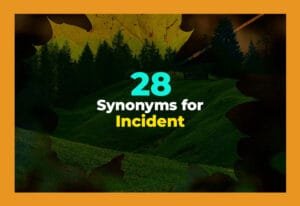You probably have seen the phrase “To Whom It May Concern” and wondered if there is a more friendly or modern way to say it. In this article, we will explore many fun alternatives like ‘Dear Sir or Madam,’ ‘Dear Team,’ or even ‘Greetings.’
Dear Sir or Madam
‘Dear Sir or Madam’ is a classic way to start a letter when you don't know the name of the person. It is polite and professional, so it works well in formal letters. People often use it in job applications or official requests. It shows respect while still keeping things general. It may feel old-fashioned, but it is safe and widely understood.
- Dear Sir or Madam, I am writing to request more information.
- Dear Sir or Madam, Your help is greatly appreciated.
- Dear Sir or Madam, I look forward to your reply.
Dear Team
‘Dear Team’ is a great way to write when your message is for a group. It feels friendly but still polite. You can use it in emails to coworkers or project groups. It shows that you care about everyone together, not just one person. People often like it because it feels warm and inclusive, making the reader feel part of something.
- Dear Team, Thank you for your hard work this week.
- Dear Team, Please review the new project plan.
- Dear Team, Let's meet tomorrow to discuss our goals.
Also Read: 23 Other Ways to Say “Safe Travels”
Greetings
‘Greetings’ is a friendly and general way to start a letter. It works well when you are not sure who will read it. It is formal enough for business, yet friendly for personal letters too. Using ‘Greetings’ can make your letter feel warm without being too stiff. It is short, polite, and flexible for many situations.
- Greetings, I hope this message finds you well.
- Greetings, I am excited to share this news.
- Greetings, Please see the attached document for details.
Dear Hiring Manager
‘Dear Hiring Manager’ is perfect for job applications. When you don't know the name of the person in charge, this is polite and professional. It shows that you respect the role and are serious about applying. Many HR departments prefer this over ‘To Whom It May Concern.’ It makes your letter feel more targeted and personal.
- Dear Hiring Manager, I am eager to join your company.
- Dear Hiring Manager, Please find my resume attached.
- Dear Hiring Manager, I would love to discuss my qualifications.
Hello
‘Hello’ is casual, friendly, and simple. It works well for emails or messages where formality is not needed. It can open a conversation without feeling stiff. Many people like ‘Hello’ because it is easy and approachable. It can also make your writing feel more natural and personal.
- Hello, I wanted to ask about the upcoming meeting.
- Hello, Can we schedule a quick call this week?
- Hello, I hope your day is going well.
Dear Colleagues
‘Dear Colleagues’ is used in workplaces when you write to your coworkers. It is polite and friendly, and it shows respect for the people you work with. It works well for emails, memos, or reports. Using this greeting can make your message feel professional and inclusive. Colleagues appreciate this because it feels respectful and cooperative.
- Dear Colleagues, Please review the attached report.
- Dear Colleagues, Let's meet tomorrow to discuss the project.
- Dear Colleagues, Thank you for your support on this task.
Dear Friend
‘Dear Friend’ is warm and personal. It works when you know the person but still want to keep it friendly. It can be used in personal letters, support notes, or casual messages. It gives a nice emotional touch and makes the reader feel valued. People enjoy letters that start with this greeting because it feels caring.
- Dear Friend, I hope you are having a great week.
- Dear Friend, Just wanted to check in and say hi.
- Dear Friend, I am thinking of you and your family.
Dear Customer
‘Dear Customer’ is perfect for business letters or emails to clients. It is polite and professional while being general enough to use for many clients. Companies often use it in newsletters, thank-you notes, or service updates. It helps make the client feel respected and valued, without using their name.
- Dear Customer, Thank you for your recent purchase.
- Dear Customer, Your feedback is important to us.
- Dear Customer, We are happy to offer this special deal.
Attention
‘Attention’ is a formal and direct way to start a letter. It shows the letter is for a specific person or department. It is often used in businesses, official letters, or documents that need action. Using ‘Attention’ makes sure the reader knows it is for them and that the message is important.
- Attention: Accounts Department, Please process this invoice.
- Attention: HR Manager, I have attached my resume.
- Attention: Customer Service, I need help with my order.
Dear Client
‘Dear Client’ is commonly used in professional or business letters. It is polite, professional, and shows respect for the person you are writing to. It is useful for letters about services, invoices, or updates. Clients feel valued when you use this greeting. It also works well in emails, newsletters, or service communications.
- Dear Client, We are happy to offer our new service.
- Dear Client, Your feedback is appreciated.
- Dear Client, Please see the attached report.
To the Manager
‘To the Manager’ is simple and direct. It is often used when sending complaints, requests, or inquiries. It makes the message clear and professional. Readers understand the letter is meant for someone in authority. This greeting works well in business letters or formal emails and keeps the tone polite but straightforward.
- To the Manager, I would like to discuss an issue with my order.
- To the Manager, Please review the attached documents.
- To the Manager, I need guidance on this matter.
Dear Representative
‘Dear Representative’ is polite and professional. It is used when writing to a person representing a company or organization. It shows respect and makes the letter feel professional. This greeting works well in requests, queries, or official communication. People often choose it when they do not know the representative personally but want to be courteous.
- Dear Representative, I would like to ask a few questions.
- Dear Representative, Thank you for your time and support.
- Dear Representative, I hope you can help with this request.
Hi There
‘Hi There’ is casual and friendly. It is perfect for emails to someone you don't know well or in informal messages. It opens a conversation without being stiff. Many people like it because it feels relaxed, approachable, and modern. It is short, easy to use, and gives a good first impression in informal writing.
- Hi There, I hope you are doing well today.
- Hi There, Can you help me with this question?
- Hi There, I am excited to share some news.
Dear Applicant
‘Dear Applicant’ is used for letters to people applying for a job, school, or program. It is professional and polite. It shows respect for the reader and keeps the tone official. Many organizations use it in acceptance or rejection letters. This greeting makes the letter feel personal yet formal, keeping communication professional.
- Dear Applicant, Congratulations on reaching the next round.
- Dear Applicant, Thank you for submitting your application.
- Dear Applicant, We appreciate your interest in our program.
To the Concerned
‘To the Concerned’ is formal and polite. It is used when the exact person is unknown but needs to see the letter. It is common in official documents, requests, or complaints. Using this greeting shows professionalism and directs attention. It is respectful and clear, making sure the message is read by the right person.
- To the Concerned, Please review the attached files.
- To the Concerned, Your help is needed urgently.
- To the Concerned, I would appreciate your guidance on this matter.
Dear Partner
‘Dear Partner’ is used in business communication when writing to a partner or collaborator. It is polite, respectful, and professional. It works well in emails, proposals, or updates. Using ‘Dear Partner’ shows collaboration and respect for the person's role. It strengthens professional relationships and keeps the tone friendly yet formal.
- Dear Partner, Let's schedule a meeting to discuss our plans.
- Dear Partner, Thank you for your continued support.
- Dear Partner, I look forward to working together.
Dear Subscriber
‘Dear Subscriber’ is common in newsletters, emails, or updates. It is polite and makes the reader feel valued. It works well for announcements, promotions, or general updates. Using this greeting shows attention to your audience and makes communication feel personal. Many companies use it to connect with readers and clients in a professional, friendly way.
- Dear Subscriber, We have exciting news to share with you.
- Dear Subscriber, Thank you for staying with us.
- Dear Subscriber, Here is your weekly update.
Esteemed Colleague
‘Esteemed Colleague’ is respectful and formal. It is used in professional letters or emails to coworkers or peers. It shows admiration and politeness. Using this greeting makes your message feel serious and professional. People often use it in official communication, recognition letters, or collaborative projects. It strengthens relationships and shows respect while staying professional.
- Esteemed Colleague, I appreciate your dedication to the project.
- Esteemed Colleague, Thank you for your valuable input.
- Esteemed Colleague, I look forward to our continued work together.
Dear Friend in Need
‘Dear Friend in Need’ is caring and supportive. It is used for letters or messages to someone going through a hard time. It shows empathy and friendship. Using this greeting makes the reader feel valued and cared for. It is warm, emotional, and comforting. People often appreciate letters starting with this greeting during difficult times.
- Dear Friend in Need, I am here if you want to talk.
- Dear Friend in Need, Remember you are not alone.
- Dear Friend in Need, I hope things get better soon.

Final Thoughts
There are many ways to say ‘To Whom It May Concern,’ each with its own style. Choosing the right greeting makes your letters feel more personal, polite, or friendly. Whether formal or casual, these alternatives help you connect better with the reader. Using them can make writing feel smoother and more natural.
| Alternatives | Meaning | Example |
|---|---|---|
| Dear Sir or Madam | A polite way to start a letter when you don't know the person's name | Dear Sir or Madam, I am writing to apply for the job. |
| Dear Team | Used when writing to a group of people | Dear Team, I hope you are all doing well today. |
| Greetings | A friendly start to a formal letter | Greetings, I am excited to introduce our new project. |
| Dear Hiring Manager | Used when applying for a job without a specific name | Dear Hiring Manager, I would love to join your company. |
| Hello | Casual and simple greeting | Hello, I wanted to reach out about the meeting. |
| Dear Colleagues | Used in letters or emails to coworkers | Dear Colleagues, Please find the report attached. |
| Dear Friend | A warm greeting for someone you know lightly | Dear Friend, I hope everything is going well with you. |
| Dear Customer | When writing to clients or customers | Dear Customer, Thank you for your recent purchase. |
| Attention | Directs the letter to the correct person | Attention: Accounts Department, Please process this invoice. |
| Dear Client | Formal greeting for business letters | Dear Client, We are happy to offer you our services. |
| To the Manager | Directing your message to a manager | To the Manager, I want to discuss an issue with my order. |
| Dear Representative | Greeting for a company or organization representative | Dear Representative, I would like to ask a few questions. |
| Hi There | Friendly and casual greeting | Hi There, I hope you're having a good day. |
| Dear Applicant | Greeting for people applying for something | Dear Applicant, Congratulations on reaching the next round. |
| To the Concerned | Direct and formal greeting | To the Concerned, Please review the attached documents. |
| Dear Partner | Used in business partnership letters | Dear Partner, Let's schedule a meeting to talk more. |
| Dear Subscriber | For newsletters or email updates | Dear Subscriber, We have an exciting update for you. |
| Esteemed Colleague | Formal and respectful greeting | Esteemed Colleague, I appreciate your hard work and effort. |
| Dear Friend in Need | Supportive greeting for someone needing help | Dear Friend in Need, I am here if you want to talk. |









